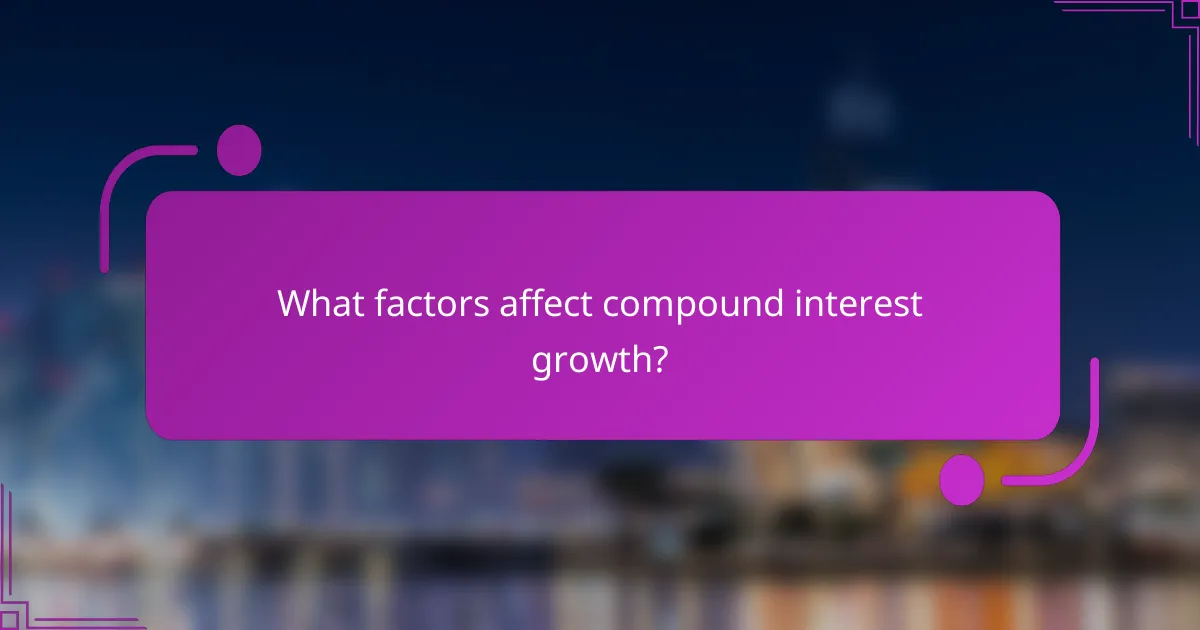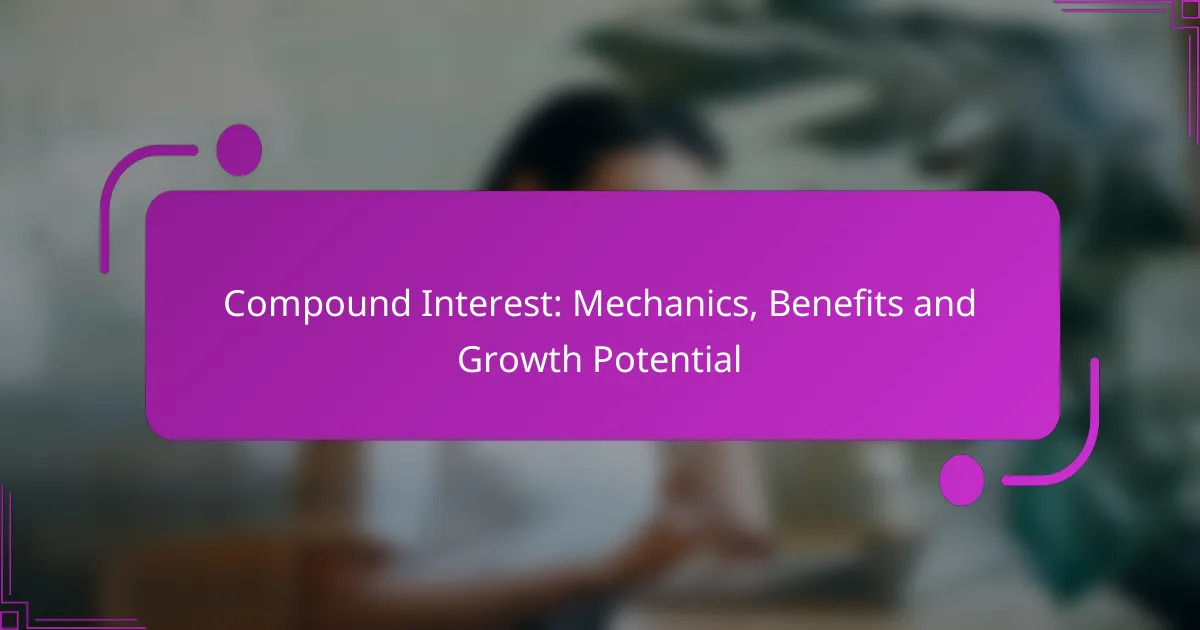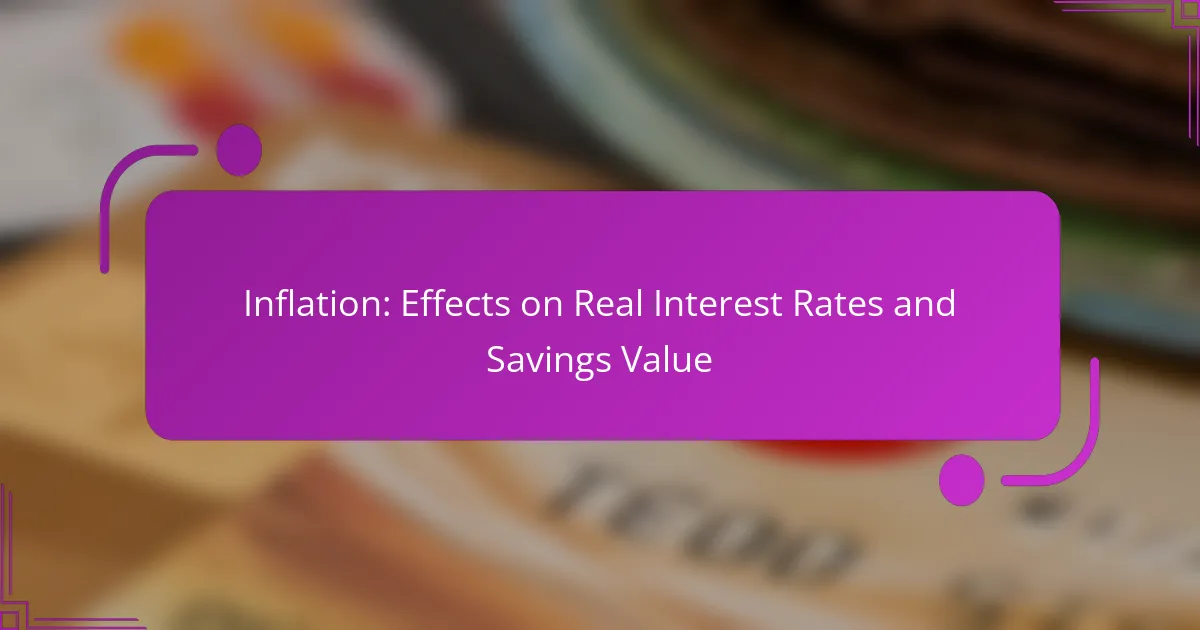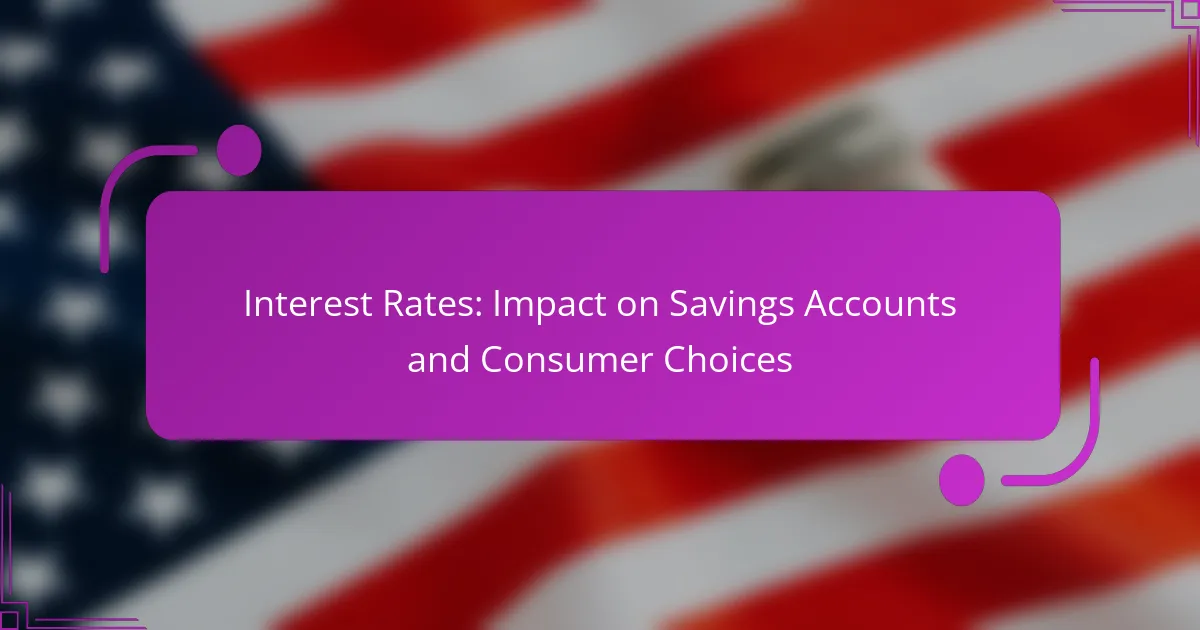Compound interest is a powerful financial concept that allows your investments to grow exponentially by earning interest on both the initial principal and the accumulated interest over time. This mechanism not only accelerates wealth accumulation compared to simple interest but also highlights the importance of early investment and strategic account selection. By understanding and leveraging the benefits of compound interest, individuals can significantly enhance their financial growth potential.

How does compound interest work?
Compound interest works by earning interest on both the initial principal and the accumulated interest from previous periods. This means that the longer you leave your money invested, the more it grows exponentially over time.
Definition of compound interest
Compound interest is the interest calculated on the initial principal and also on the interest that has been added to it over time. Unlike simple interest, which is only calculated on the principal amount, compound interest allows your investment to grow at a faster rate due to the effect of “interest on interest.”
This mechanism is commonly used in savings accounts, investments, and loans, making it a crucial concept in personal finance and wealth building.
Formula for calculating compound interest
The formula for calculating compound interest is: A = P (1 + r/n)^(nt), where:
- A = the amount of money accumulated after n years, including interest.
- P = the principal amount (the initial investment).
- r = the annual interest rate (decimal).
- n = the number of times that interest is compounded per year.
- t = the number of years the money is invested or borrowed.
This formula allows you to determine how much your investment will grow over a specified period, taking into account the frequency of compounding.
Examples of compound interest calculations
For instance, if you invest $1,000 at an annual interest rate of 5% compounded annually for 10 years, you would use the formula to find that:
A = 1000 (1 + 0.05/1)^(1*10) = $1,628.89. This shows that your investment grows significantly due to compound interest.
Another example is if the same $1,000 is compounded quarterly. In this case, the formula would change slightly to account for the different compounding frequency, leading to a higher final amount. This illustrates how the frequency of compounding can impact your investment growth.

What are the benefits of compound interest?
Compound interest offers significant advantages, primarily through the ability to grow investments more rapidly than simple interest. By earning interest on both the initial principal and the accumulated interest, individuals can maximize their wealth over time.
Wealth accumulation over time
One of the primary benefits of compound interest is its capacity for wealth accumulation. Over extended periods, even modest initial investments can grow substantially due to the exponential nature of compounding. For instance, investing $1,000 at an annual interest rate of 5% could yield around $1,628 after 10 years, showcasing the power of time in wealth growth.
Starting early is crucial; the earlier you invest, the more time your money has to compound. This principle emphasizes the importance of beginning to save as soon as possible, even if the amounts are small.
Impact of reinvestment on growth
Reinvesting interest payments significantly enhances growth potential. When interest earned is reinvested, it generates additional earnings, creating a cycle of growth. For example, if you earn $50 in interest and reinvest it, your new principal becomes larger, leading to even more interest in the next period.
Investors should consider options that allow for automatic reinvestment, such as dividend reinvestment plans (DRIPs) or certain retirement accounts. This strategy ensures that every dollar earned works harder for you.
Comparison with simple interest
Compound interest differs fundamentally from simple interest, which is calculated only on the principal amount. In contrast, compound interest builds upon itself, leading to greater returns over time. For example, with simple interest, a $1,000 investment at 5% would yield $500 over ten years, while the same investment under compound interest could yield approximately $628.
Understanding this difference is crucial for making informed investment decisions. When evaluating savings accounts or investment opportunities, prioritize those that offer compound interest for better long-term growth.

How can I maximize compound interest?
To maximize compound interest, focus on selecting the right investment accounts, compounding frequency, and starting your investments early. These factors significantly influence how much your money can grow over time.
Choosing the right investment accounts
Selecting the appropriate investment accounts is crucial for maximizing compound interest. Accounts such as high-yield savings accounts, certificates of deposit (CDs), and retirement accounts like IRAs or 401(k)s often offer better interest rates compared to standard savings accounts.
Consider tax-advantaged accounts, as they can enhance your returns. For instance, contributions to a Roth IRA grow tax-free, allowing you to benefit from compounding without the burden of taxes on withdrawals in retirement.
Frequency of compounding
The frequency of compounding directly affects how much interest you earn. Interest can compound annually, semi-annually, quarterly, monthly, or even daily. Generally, the more frequently interest is compounded, the more you will earn over time.
For example, an investment that compounds monthly will yield more than one that compounds annually, even if the interest rate is the same. When comparing accounts, look for those that offer daily or monthly compounding for optimal growth.
Starting early with investments
Starting your investments early is one of the most effective ways to maximize compound interest. The earlier you begin investing, the more time your money has to grow exponentially. Even small contributions can lead to significant growth over decades.
For instance, investing $100 a month starting at age 25 can result in a much larger sum by retirement compared to starting at age 35, even with the same contribution amount. Aim to start investing as soon as possible to take full advantage of compound interest.

What factors affect compound interest growth?
Compound interest growth is influenced by several key factors, including interest rates, the time horizon for investments, and the frequency and amount of contributions. Understanding these elements can help maximize the benefits of compound interest over time.
Interest rates and their impact
Interest rates play a crucial role in determining how quickly your investment grows through compound interest. Higher rates can significantly increase the amount of interest earned over time, while lower rates may result in modest growth. For example, an investment with a 5% interest rate will grow faster than one with a 2% rate.
It’s essential to compare different investment options and choose those that offer competitive interest rates. Even a small difference in rates can lead to substantial variations in growth over the long term.
Time horizon for investments
The time horizon for your investments directly affects the compounding process. The longer your money is invested, the more time it has to grow through compounding. For instance, an investment held for 30 years will typically yield much higher returns than the same investment held for just 10 years.
When planning your investments, consider your financial goals and how long you can commit to them. Longer time horizons generally allow for greater compounding benefits, making early investment a key strategy for wealth accumulation.
Contributions and additional deposits
Regular contributions and additional deposits can significantly enhance the growth potential of compound interest. By consistently adding to your investment, you not only increase the principal amount but also create more opportunities for interest to compound. For example, contributing $100 monthly can lead to substantial growth over several years.
To maximize your investment, set up automatic contributions and take advantage of employer-sponsored retirement plans that may offer matching contributions. Avoid withdrawing funds prematurely, as this can hinder the compounding effect and reduce overall growth.

How does compound interest apply in major cities?
Compound interest significantly impacts savings and investment strategies in major cities, allowing individuals to grow their wealth over time. By reinvesting interest earnings, investors can benefit from exponential growth, making it essential to understand how it operates within different financial contexts.
Investment options in New York
In New York, investors can explore various options that utilize compound interest, such as high-yield savings accounts, certificates of deposit (CDs), and mutual funds. High-yield savings accounts often offer interest rates ranging from 0.5% to 2%, allowing for steady growth of savings over time.
Additionally, mutual funds can provide higher returns, typically between 5% and 10% annually, depending on market conditions. Investors should consider their risk tolerance and investment horizon when selecting options, as these factors will influence the benefits of compounding.
Compound interest in London savings accounts
In London, savings accounts that offer compound interest are widely available, with rates generally falling between 0.1% and 1.5%. While these rates may seem modest, the power of compounding can still lead to significant growth over time, especially when funds are left untouched for several years.
It’s important to compare different banks and their offerings, as some may provide promotional rates that can enhance returns. Regular contributions to these accounts can further amplify the effects of compound interest, making it a practical strategy for long-term savings.
Real estate investments in Los Angeles
Real estate in Los Angeles can be a lucrative investment that benefits from compound interest through property appreciation and rental income. Investors often see annual appreciation rates between 3% and 7%, depending on market trends and location.
Moreover, reinvesting rental income can accelerate wealth growth, as the compounded returns from both appreciation and income can lead to substantial financial gains over time. Prospective investors should conduct thorough market research and consider factors such as location, property type, and financing options to maximize their investment potential.



